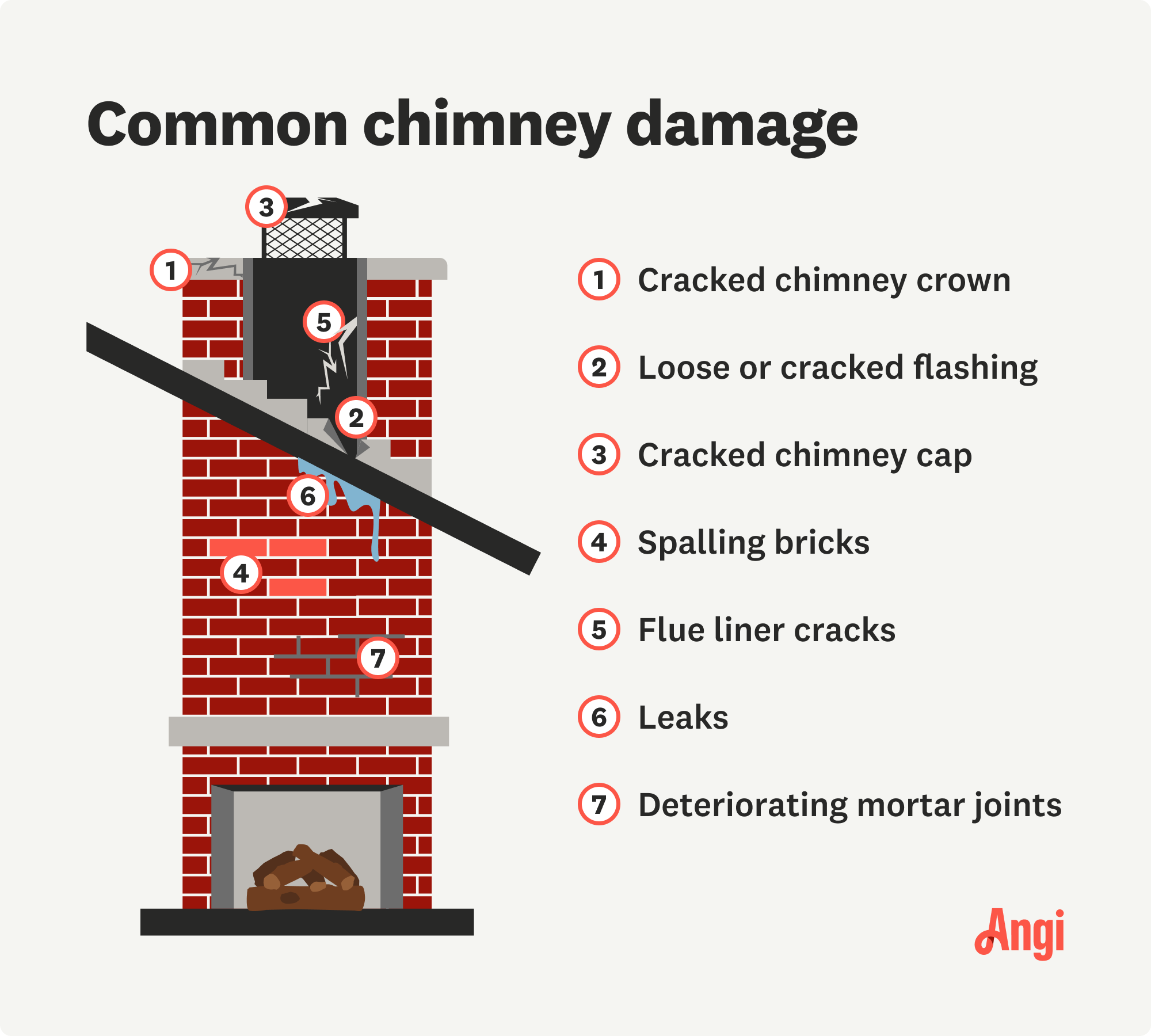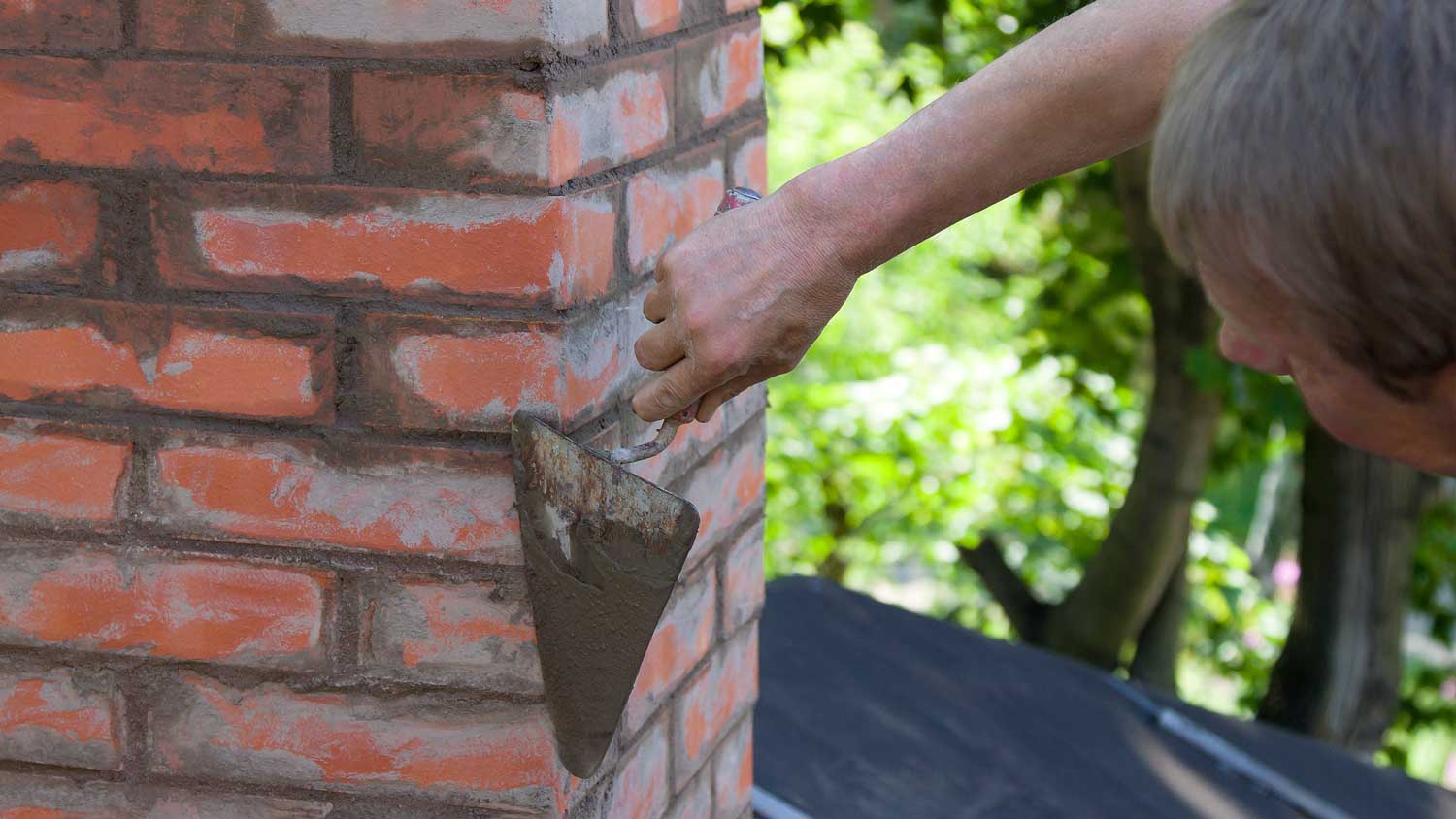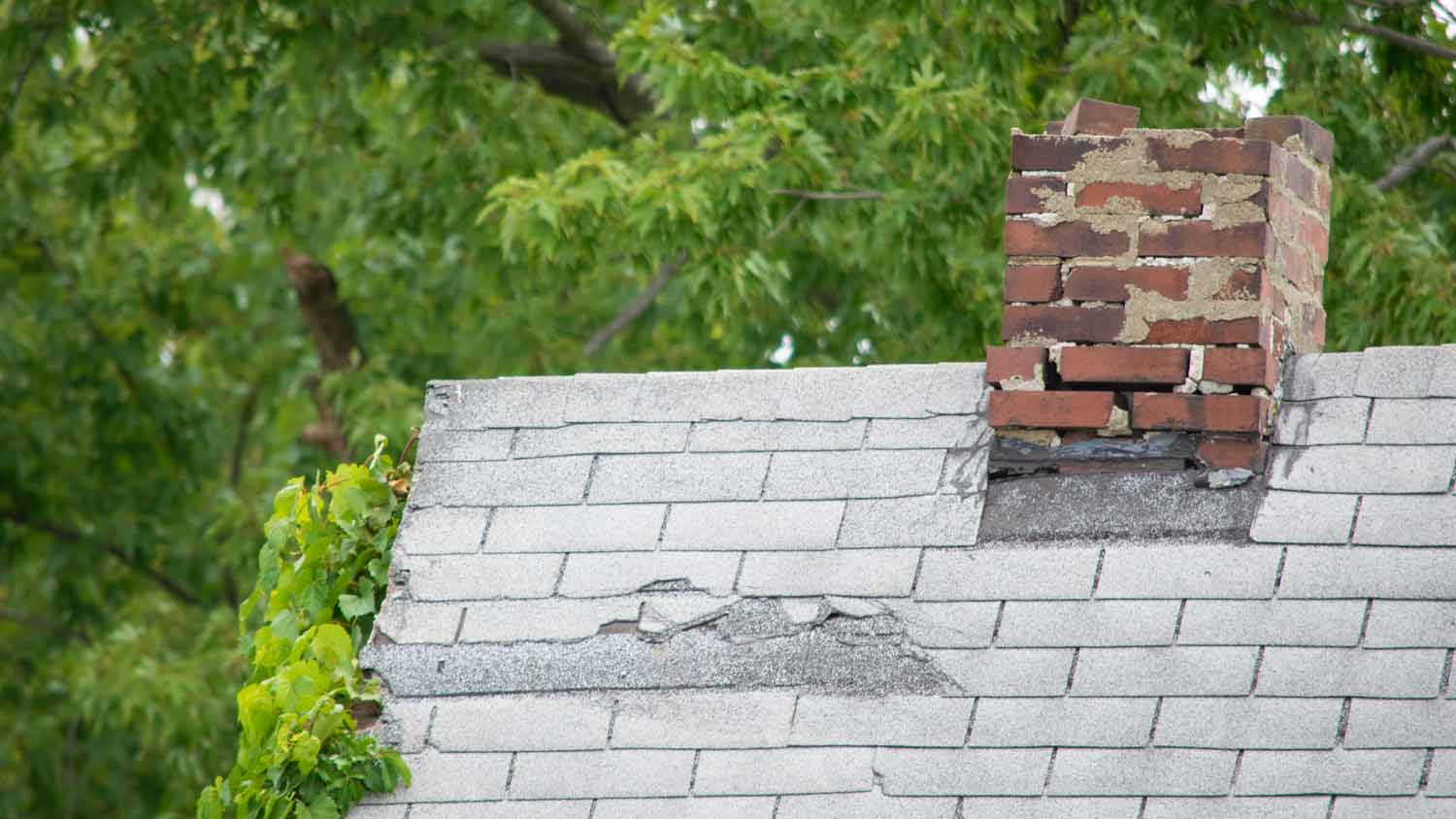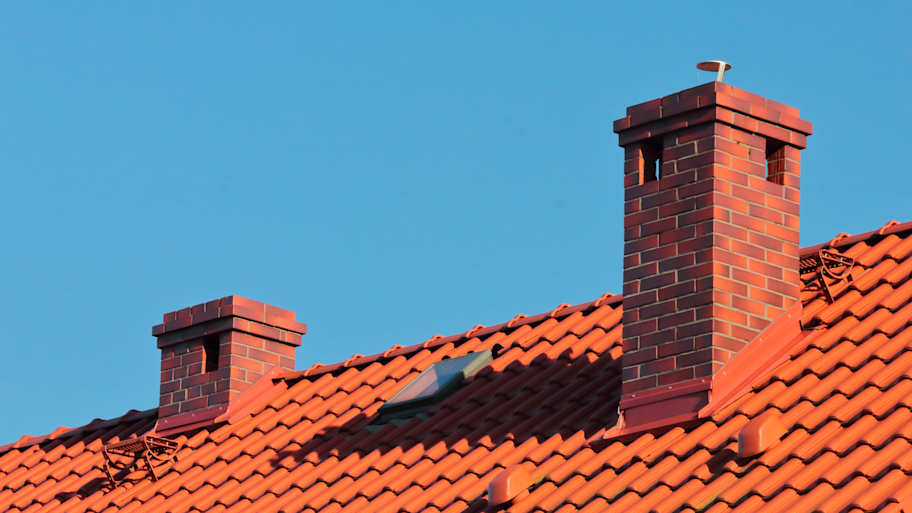
The average cost to repair or replace a chimney crown depends on the damage, material, and any other chimney maintenance services bundled into your project.
Stop the problem before it pours trouble


Damage to your chimney crown, flashing, mortar joints, or flue liner can all cause chimney leaks.
Leaking chimneys can cause significant structural damage.
Leaking water causes water stains and mold growth, impacting indoor air quality.
Regular inspections are the best way to prevent a chimney from leaking.
Have you noticed a mysterious leak near your fireplace? Your chimney may be telling you something’s wrong. A chimney leaking inside the house might start small, but if ignored, it can damage your home significantly. Here are the common culprits behind these leaks, how to spot them, and tips for fixing them before they become a costly headache.

The chimney crown is a metal, mortar, or concrete cap that sits at the top of the chimney. It is a vital component that prevents water from entering. If it's cracked or damaged, water can seep into the chimney. Signs of this include cracks on the crown, damp spots on the walls and ceilings near the fireplace, and even water pooling in the fireplace.
Here are some signs and causes of a damaged chimney crown:
Significant water damage: Cracks in the chimney crown allow rainwater to get inside the chimney, which can erode the entire chimney and make it vulnerable to collapse. The water can also damage your home’s walls and floors.
Liner deterioration: The chimney liner, or flue liner, helps direct combustion gases, like carbon monoxide, out of your home. However, if water gets into a cracked crown, it will also damage the liner, increasing the risk of chimney fires and carbon monoxide leaks.
Freeze-thaw damage: With a cracked chimney crown, water can enter the chimney. In winter, the water can freeze, causing more cracks in the chimney. Then, in warmer weather, the cracks can expand and make the bricks or stones less stable.
Applying a waterproof sealant is a quick fix for minor cracks. Consider having a chimney repair specialist install a new crown if the damage is more extensive.
Chimney flashing is a protective shield made from thin metal, usually galvanized steel or copper, that wraps around the area where the chimney meets the roof. Its job is to keep water from leaking into your attic or living spaces.
Detecting damaged flashing is not easy. You can look for gaps where it lays. Also, a leaking chimney usually leaves a fireplace with a foul odor, like mildew. When in doubt, call a local professional. Other signs of damaged flashing can include:
Water stains
Peeling paint
Mold growth
Rotted wood framing
Wet insulation
Higher energy bills
Remove the old, damaged flashing around the chimney and replace it with new flashing pieces cut to fit its dimensions. Afterward, seal the edges with roofing sealant to prevent leaks. Hiring a professional is best if you're uncomfortable with heights or working on the roof.

Worn or deteriorated mortar joints can cause a chimney to leak by allowing water to seep through the gaps in the masonry. Mortar joints are the material between the bricks that hold the chimney together and keep it watertight. Over time, exposure to the elements can cause the mortar to crack, crumble, or wear away, creating pathways for water to seep into the chimney.
The chimney becomes more vulnerable to weather with long-term moisture exposure. The water can further spread into the house, leading to water damage in ceilings, walls, and floors. The water may damage the chimney mortar, and combustion gases and heat may incorrectly escape through the weak mortar rather than through the flue.
Damaged mortar is easy to confirm. Look for signs of damage, like cracking or crumbling mortar and gaps between bricks or bulging. You might also notice water stains or damp patches on the exterior walls near the chimney or on the interior walls around the fireplace. Lastly, a white, powdery substance on the surface of the chimney bricks is a sign of moisture passing through the masonry.
If the bricks are not deteriorating, tuckpointing or repointing can boost your chimney's structural integrity.
The flue liner directs smoke and gases out of the chimney. It is an important feature that protects the chimney's masonry and joints from heat damage, which can prevent house fires.
However, if it is cracked or improperly installed, water can leak into the chimney. Unfortunately, flue liner damage is more challenging to detect without a professional inspection, but you may notice water damage or staining inside the fireplace or stove.
Other signs of a leaking flue liner include:
Water in the firebox
Damp walls and ceiling
Stains on walls and ceiling
Musty odor in the firebox or attic
White discoloration on the outside of the chimney
Rusty damper that won’t open or shut fully
Repair or replace the flue liner. This task usually requires professional help due to the complexity of accessing and fixing. A new chimney liner costs between $1,500 and $5,000 including installation.

Fortunately, there are ways to catch a chimney leak early. Here are five ways to prevent a chimney leak or at least catch one before it becomes a major problem:
Schedule an annual chimney inspection
Apply waterproof sealant to the chimney
Install a chimney cover
Repoint the chimney as needed to strengthen the mortar
Hire a pro to thoroughly clean the chimney once per year
If you suspect your chimney is leaking inside the house, hire a local chimney repair specialist to make repairs as soon as possible. The longer you ignore a chimney leak, the more damage it can do. It also increases the risk of a fire or chimney collapse.
Requests for chimney sweeping account for over half of all chimney maintenance services, and about one-third are for inspections. Waterproofing is another popular project to prevent issues like leaks and water damage. A certified chimney sweep can inspect and clean your chimney annually, as well as recommend necessary repairs.
Chimney leaks, even when small, are a serious issue that requires expert assistance. Leaks make the chimney masonry more vulnerable to crumbling or even collapse, and working on a chimney involves getting on a roof and working near soot, both of which a trained pro knows how to do safely.
Not only that, but if you make even a simple mistake while trying to repair a leaking chimney, you risk worsening water damage and chimney deterioration. Instead, keep your family safe by leaving this job to the pros.
From average costs to expert advice, get all the answers you need to get your job done.

The average cost to repair or replace a chimney crown depends on the damage, material, and any other chimney maintenance services bundled into your project.

Chimney repair costs can vary by the type of chimney you have and the required repairs. Use this guide to help you estimate project costs.

Chimney liners are important for fire safety and energy efficiency in your home. Learn how much chimney liners cost based on type, size, material, and other factors.

Worried that your flue might go up in flames? These nine chimney fire signs will help you get ahead of the situation—and keep your home and family safe.

If you want to be sure your chimney is working properly, you’ll need a professional inspection. So who does chimney inspections? We’ve got all the info.

Oversized flues lead to chimney corrosion, freeze/thaw damage, and an uncomfortable draft. Here are the standard chimney flue sizes to ensure proper integration.